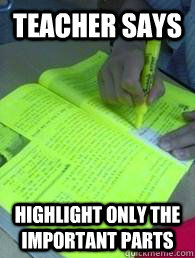Laura Walton
AP English Literature 📚
145 resourcesSee Units
What is a Short Story?
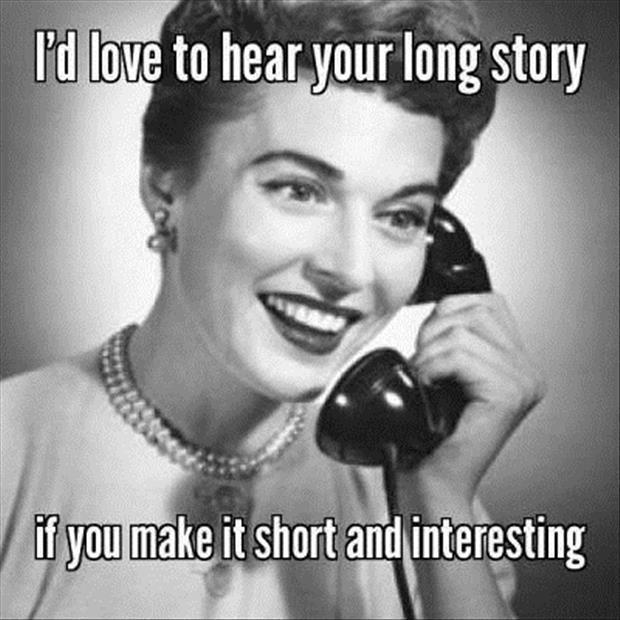
It’s not just a story that is short. Well, it is that, but a short story is not just a piece of a longer story or novel: it is a brief, stand-alone piece of literature with a beginning, middle, and end, character development, theme, and all of the fun literary devices that exist in longer stories. It does what a novel does, in fewer pages and tighter images, sentences, and phrases. This means that a literary short story is almost always denser than a novel.
Wait. Literary short story? As opposed to what?
Literary vs. Commercial Fiction
Okay, so. If you like to read, and you read widely, then you probably have a few different types of literature that you go to at different times. Sometimes, you’re lying on the beach, or on a holiday break at home, and you want something easy to follow, with a clear beginning, middle, and end, without complicated plot or character development. That’s cool, and books and stories that fall into that category are called commercial fiction.
Commercial fiction is meant to be consumed quickly and easily, and doesn’t require repeat reading to get the full impact of the stories told. Examples of some popular commercial fiction include novels like Divergent, The Da Vinci Code, Crazy Rich Asians, and The Hunger Games.
There is nothing wrong with reading commercial fiction: even we literature teachers need a break from diving deeply into novels, and these books and stories provide an escape from reality for a short while. But you won’t see commercial fiction appearing on the AP Lit exam. Why? Because there isn’t enough deep analysis to be done with commercial fiction.
As opposed to commercial fiction, which provides an escape from the real world, literary fiction forces us to dive more deeply into the real world, even through fictional worlds, and think about our reality through literary devices and parallels. Literary fiction requires multiple readings, and deep readings at that, to fully understand the text. We are often unsatisfied with the endings of literary short stories and novels because, like in reality, they don’t end with loose ends tied up.
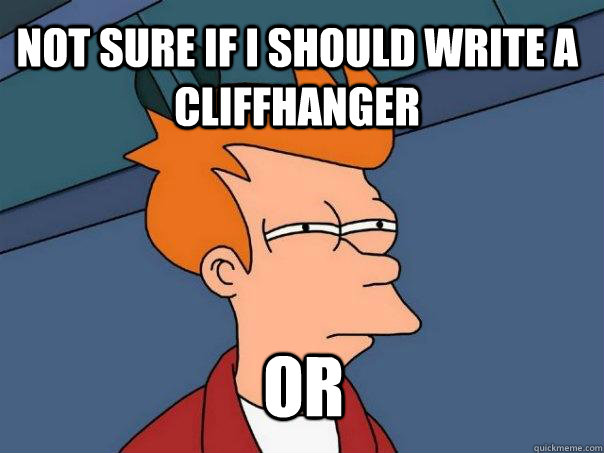
Literary fiction leaves us with questions. It makes us go back and find “something that we missed.” Literary fiction uses figurative language and literary devices - devices that, by definition, are indirect descriptors - to depict a story, and depict an author’s view of the world. The literature you read in your AP Lit class - the kind that can make your head hurt with multiple deeper meanings and symbols - is literary fiction.
Is there a clear-cut line between the two types? Nope. As with most things in life, fiction falls in a spectrum: some commercial fiction has literary elements, and some literary fiction may toe the line of being consumable and commercial (and enjoyable to read!). Just know that what you will study in AP Lit and analyze on the exam will fall into the literary category in some way.
How are short stories used on the AP Literature Exam?
You will read and analyze entire poems during the multiple-choice and free-response Q1 sections of the exam. You will analyze an entire novel or play for your free-response Q3. But short stories don’t have their own special section, and you will rarely, if ever, get to analyze a full short story on the exam.
Then what’s the point of studying short stories??
Firstly, they do appear on the exam, but in excerpts and pieces in the multiple-choice and free-response Q2 portions. (Just because a short story is “short,” doesn’t mean it can fit on one page for your analysis.)
Secondly, analyzing short stories prepares you for reading and analyzing longer novels like a boss scholar: if you’re used to searching a short text for deeper symbolism, characterization, tone, and literary devices, then you’ll use the same skills to search novels and plays.
And finally, because you only get those brief excerpts from short stories, novels, and plays on the exam, and you’re in the habit of reading short stories like a scholar, then you’ll breeze through analyzing the excerpts on the exam. Or it’ll at least make it a bit easier on you.
How to read a short story. Like, really read it.
Okay, cool. Now you know the difference between literary and commercial fiction, why literary fiction is used in your AP Lit class and on the exam, and how literary short stories are used on the AP Lit exam itself. Now, it’s time for why you’re really here.
How the devil do I read a short story like a scholar?
First of all, read the story more than once. Think you’ve got an easy night because your teacher only assigned a ten-page story to read? Think again. Short literary fiction is designed to be perplexing, and reading the story only once is likely going to leave you mega-confused.
Read the story at least twice, ideally three or four times, and annotate the story during those second and third and fourth reads. I always suggest reading it the first time for understanding, and the second and subsequent reads for further comprehension and analysis.
Neat. Got it. But annotation: my teacher tells me to annotate, but I never know what to annotate, or how!
Different people annotate in different ways, and the more you do it, the better you’ll get at annotating in a way that makes sense to you. Start with a simple, consistent symbol system, like this one
! anything that stands out to you in some way, or is surprising
* anything that is important (I’ll get to what can be “important” later on)
? anything that is confusing, or that you have a specific question about
→ anything that has a real-world connection or parallel
Circle words or phrases that are unfamiliar, or that are used in a way that you’ve never seen.
Underline or highlight the particular phrases or passages that elicit these reactions, and mark them with these symbols. A word of caution: avoid highlighting or underlining hugely long passages, and especially without using an annotation system. Otherwise, you might end up with the whole short story highlighted, with no real annotation or notes for you to refer back to!
Next, you want to make notes in the margins near these marked phrases and passages. For example, if something stood out to you, briefly note what about the passage, precisely, stood out. Or, write the question that you have about the particular phrase or paragraph or character. Annotations do not have to be long: they just need to make sense to you as you go back through the text and look for evidence to use in your writing and discussions.
Another effective annotation tool, especially for comprehension, is summary and paraphrasing: next to each passage or paragraph, write a brief summary, in your own words, describing what is happening. In this way, you can also ask questions, mark what stands out to you, and make connections between the text and the real world (which is where you’re going to find themes). If you want even more practice or guidance with annotation, we have a stream for that!
Now, then. Back to my favorite teacher phrase: “Mark anything that’s important.” You’re probably thinking to yourself, “But everything is important! Highlight all the things!” Or, perhaps, “Nothing is important or more important in this text. Gahhhh!”
So, let’s talk about what's “important” in a short story, shall we? We’ll work with “The Story of an Hour” by Kate Chopin for these sections, so read it and annotate it as explained above. The story is super short, and great for a quick dive into reading short stories like a champ.
The (Sometimes) Hidden Question: Overall Meaning
For every single analysis you do for a short story, you must determine its overall meaning and general themes. Why? Because every AP Lit exam question, whether it directly states it or not, will ask you how some aspect of the story you’re working with ties into the overall meaning of the text.
This phrase is most commonly seen with Q3 prompts (that is, prompts that ask you to analyze full novels and plays), but short stories also have overall meaning and purpose that you need to determine for analysis. Let’s look at some sample prompts to show this.
Sample Prompt 1: In serious literature, no scene of violence exists for its own sake. Choose a novel or play that confronts the reader or audience with a scene or scenes of violence and analyze the significance of the scene or scenes to the work’s meaning. (from CollegeBoard.org)
Sample Prompt 2: Choose a novel or play in which cultural, physical, or geographical surroundings shape psychological or moral traits in a character. Then write a well-organized essay in which you analyze how surroundings affect this character and illuminate the meaning of the work as a whole. (from CollegeBoard.org)
In these two Q3 prompts, as with most of the past and future prompts you’ll see, the question asks you not only to analyze a particular aspect of the story (violence, surroundings, etc.), but how that aspect “illuminates” or highlights the meaning of the work. “Meaning” can also be worded as “author’s purpose,” as in the following sample:
Sample Prompt 3: Although literary critics have tended to praise the unique in literary characterization, many authors have employed the stereotyped character successfully. Select a novel or play and analyze how the conventional or stereotyped character(s) function(s) to achieve the author’s purpose. (from CollegeBoard.org)
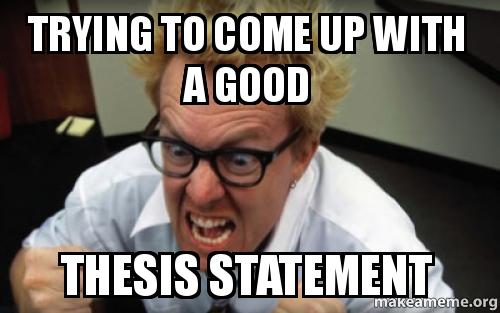
When you determine the overall meaning of a text, you’re determining why the author chose to write the text, AKA the author’s purpose, as well. So, don’t fall into the trap where you simply describe the first part of the prompt and leave out tying it back to the meaning; otherwise, you’ve only answered half of the question. Your thesis statement should answer all the questions asked in the prompt.
Short Stories and Complex Relationships. (No, Not That Kind. Maybe.)
Another common phrase you’ll see in AP Lit prompts, especially for Q2 (the prose prompt), is “analyze the complex relationship between…” or other variations of complexity. Because you’re studying and analyzing literary fiction, you will find complexity in the text. Finding the overall meaning or author’s purpose in a text should lead you to the complex aspect of the story you need.
But what, exactly, counts as “complex” or a “complex relationship”? Complexity is anything that makes something, well, complicated. Consider the following example regarding fatherhood:
Society values fathers as figures of protection, love, and wisdom for their children.
How might an author make this idea of the fatherhood complex? They might portray a father who does not display one or any of these traits, or a character who questions what fatherhood means to him versus what his society believes.
Or, to tie an example into “The Story of an Hour”:
Society dictates that marriage is an expression of love and devotion, and a spouse should grieve the loss of a spouse.
How does the author create complexity in her short story? Louise, rather than feeling grief and loss at her husband’s death, feels freed and triumphant, even though she knows this is wrong in her society’s eyes.
Your prompt may (and has in the very recent past!) ask you to describe “how the author explores the complex interplay between emotions and social propriety” in the passage. You would then use examples of the plot, diction, literary devices, and figurative language to describe how and why the author shows this complexity.
Literary Devices and Figurative Language in Short Stories
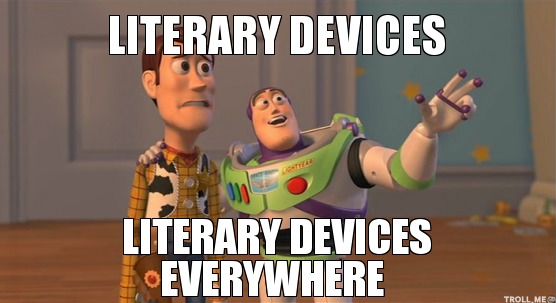
One of the major items you’ll look for in short stories on the AP Lit exam is literary devices, and their effect on the passage as a whole, or tied into a particularly complex aspect of the story. So, you’ll want to mark the literary devices you see, and describe the what, how, and why of the device:
- What is the literary device being used?
- How does the author use this device? Who or what does it describe? Where does it appear? How does this device show complexity and overall meaning?
- Why does the author choose to use this device to accomplish what? Why does the author choose this literary device over another to show complexity and meaning?
A common pitfall with describing literary devices is doing just that - simply describing the device, and not what its purpose or effect is in the story. Any phrase or sentence you pull should be evidence towards your thesis and used as such in your essay. If you highlight a literary device from a story in your essay, you’d better be ready to describe how and why it’s used; otherwise, you’ve wasted valuable time and cramped your hand for nothing.
There was a feverish triumph in her eyes, and she carried herself unwittingly like a goddess of Victory.
There are multiple literary devices we can pull out of this sentence, but let’s focus on the simile: “she carried herself unwittingly like a goddess of Victory.” Great! We have the what: Chopin uses a simile to describe what Louise looks like. But don’t stop there.
How does Chopin use this device? She uses the simile to compare her main character, Louise, to a goddess of victory, of triumph, as she leaves her room for the first time since believing she is free from the shackles of marriage.
Now, for the more difficult part: why does Chopin use a simile, and in particular, this simile, to describe Louise? You may consider why she would choose a simile over other literary devices (such as imagery or metaphor), or why she chose the particular image of a goddess of victory instead of simply a goddess, or a winner of a race, or something similar.
This is where your analysis ties into your thesis. What are you trying to prove through your thesis, and how does this simile, and use of this simile, support your argument? How does this phrase you’ve pulled tie into the complexity and meaning of the story overall?
The simile can hearken back to the discussion of social complexity: that Louise, rather than follow social customs and grieve her husband’s death, walks like a goddess of victory over the stifling institution of marriage. But, she is just that: like a goddess of victory, rather than metaphorically being one, and will lose that image at her husband’s arrival.
Characterization in Short Stories
Remember: a short story is not just a piece of a story. It’s a story with a plot and character development, with a defined beginning, middle, and end, in a shorter space than a novel or play. Sure, you might be thrown into the middle of a setting or scene, but that doesn’t mean that a character isn’t fully hashed out in a short span of time, or that a “complex relationship” can’t develop between two or more characters.
This means that you, yes you, can and will do complex analyses of characters in short stories or excerpts.
When reading literary short stories, look for and annotate any figurative language, diction, and narration that fleshes out a character. Physical descriptions, flashbacks, dialogue, and the characters' responses to the action of the story all form their characterization. If an author bothered to fit a description into the small space they chose to write the story, then it’s important and should be marked.
In “The Story of an Hour,” Louise is a full-fledged character with personality traits, flaws, and development, all in the span of two pages. Chopin describes the “complex relationship” between Louise and her husband in two short sentences:
“And yet she had loved him--sometimes. Often she had not.”
Spouses are expected to love each other, yet in these lines, Louise admits that this was not always the case. Chopin also portrays Louise’s complex relationship with her society in the following paragraph:
“There would be no one to live for during those coming years; she would live for herself. There would be no powerful will bending hers in that blind persistence with which men and women believe they have a right to impose a private will upon a fellow-creature. A kind intention or a cruel intention made the act seem no less a crime as she looked upon it in that brief moment of illumination.”
Louise does not agree with the norms placed upon her by her society: she looks forward to “living for herself” rather than by the will of her husband or the institution of marriage, and she believes she will find happiness outside of where her society deems it appropriate to do so. Chopin continues, through narration, imagery, and figurative language, to fully develop Louise into a complex character. Assume that this is the case with every piece of literary fiction you read, and analyze accordingly.
All Roads Lead to Tone and Irony
This is where finding the overall meaning of the text is important again: you have to know an author’s tone towards a subject or person before you can determine meaning. Does the author have a positive or negative tone towards a social norm or idea? How does the author show this tone through their diction (word choice)?
In “The Story of an Hour,” Chopin displays her negative tone towards marriage in the following line:
“There would be no powerful will bending hers in that blind persistence with which men and women believe they have a right to impose a private will upon a fellow-creature.”
We can infer Chopin’s negative tone through words such as “blind persistence,” which imply that men and women of her time followed a norm without fully seeing or understanding its reasoning, and through the phrase “believe they have a right,” implying that people believe, but do not actually hold, the right towards another “fellow-creature.”
So, we know that Chopin does not see marriage as a positive institution. As a result, we know her overall purpose includes showing her readers this idea, and that any part of her story that portrays marriage in a positive light is likely to be ironic. You can do this same exercise (with more examples to prove your point) with any short story you read
Ooh, the irony! Errr, remind me what that is again, exactly?
Irony breeds in short stories: they are an excellent medium to show an author’s often divisive view of a social norm, stereotype, or relationship. Short stories move through a plot quickly, allowing an author to get to an ironic ending or description more quickly than in a novel or play. Missing an author’s ironic tone or plot twist can result in a misreading of the text and misanalysis on the exam.
Yikes! So, how do we make sure we spot irony in a short story?
First of all, remember that something is ironic when the reader expects one outcome, and the opposite happens. We see irony appear in three different forms:
Verbal Irony: The author or a character says something, but means the opposite. (A lot of people call this being “sarcastic.” Sarcasm is a type of irony, but involves being cruel on purpose, whereas irony is not always cruel.)
Example: “[Selling babies for eating] would increase the care and tenderness of mothers towards their children...” - Jonathan Swift, “A Modest Proposal” (He definitely means the opposite of what he is saying. Trust me.)
Situational Irony: The reader expects one event or ending, but the opposite occurs.
Example: Instead of being happy about her husband’s appearance after believing him dead, Louise dies of heart failure at the end of “The Story of an Hour.”
Dramatic Irony: The reader knows something the characters in the story do not.
Example: The doctors proclaimed that Louise died of “heart disease - of the joy that kills” at the sight of her husband. We, the audience, know she died of shock and horror at her husband’s appearance.
Irony can be notoriously hard to spot in written texts. Why? Because our markers for irony, especially verbal irony, are just that: verbal. We listen for our friend’s tone of voice when they say they’re having a “great day” (is it actually great, or are they miserable and being ironic?). Unfortunately, we have yet to invent a special font for irony, so we have to look for other aspects in a short story to find it:
- Tone: See the explanation at the beginning of this section.
- Context: What is the author discussing in the short story? For example, we know that the ending of “The Story of an Hour” is dramatically ironic because we go the context that Louise wants to be free of her marriage, not back in it. If something doesn’t make sense with the rest of the plot or descriptions from the story, go back and re-read it with an ironic tone in mind, and it may come together.
- Hyperbole: Are other parts of the text, like descriptions of characters or situations, exaggerated to an extreme degree? Do you see stereotypes in a piece of fiction? It’s likely that the author is attempting to ridicule and subvert these norms and stereotypes through exaggeration and irony.
- Diction: Word choice ties into context and hyperbole. How is the author describing particular characters and situations? Are the words the author chooses portraying something in a positive or negative light? Do they exaggerate a situation? Diction will also indicate tone, which will indicate whether or not an author is being ironic.
Thematic Analysis of a Short Story
So, now you have the tools to annotate and mark the important aspects of a short story for analysis, and you know what to look for. Now, what do you do with this evidence, and how will you use it on the exam?
As explained in the separate sections above, you will use whatever you find in the short story to support your thesis statement that you create based on the prompt you receive in the Free Response section of the exam. When you do timed writing, keep these tips in mind:
- DO read and mark the entire prompt before diving into the story. This way, you’ll narrow down what you’re analyzing.
- DO consider the what, how, and why of an author’s literary choices (tone, literary devices, characterization, etc.). High scores on AP Lit essays are built on diving into the “whys” of the stories, not just the “whats.”
- DON’T feel like you need to mark and find every single literary device or super-secret symbol in the story. Focus on what you need to prove your thesis, and only your thesis.
You will also use short story excerpts for the Multiple Choice section of the exam. Many of the same strategies remain as for the Free Response analysis:
- Read through the questions before reading the story. Mark any lines or passages that the questions ask you to analyze specifically.
- Annotate for comprehension and clarity (using summary and paraphrase).
- The questions will ask for the whats, hows, and whys of a story and the author’s choices - be sure to look and mark for all three as you annotate.
For either section, the best things you can do for yourself are READ WIDELY and PRACTICE using past AP Lit prompts, multiple-choice questions, and good, dense examples of literary short stories.
Some good, dense literary short stories for practice (and enjoyment!)
Want to work your analysis chops on short stories, but don’t know where to begin? Here is a non-exhaustive list of good, dense literary short stories to dive into and practice the skills detailed in this guide. As a caution, much literary fiction by nature contains mature content and controversial subject matter; feel free to look up a synopsis of any short story to determine if the story is right for you:
“This is What it Means to Say Phoenix, Arizona” by Sherman Alexie
“The Story of an Hour” by Kate Chopin
“The Yellow Wallpaper” by Charlotte Gilman
“Hill Like White Elephants” by Ernest Hemingway
“Sweat” by Zora Neale Hurston
“The Lottery” by Shirley Jackson
“Where Are You Going, Where Have You Been?” by Joyce Carol Oates
“The Things They Carried” by Tim O’Brien
“A Good Man is Hard to Find” by Flannery O’Connor
“Revelation” by Flannery O’Connor
“The Cask of Amontillado” by Edgar Allan Poe
Browse Study Guides By Unit
🤔Exam Skills
Short Fiction Overview
- AP English Lit: Poetry Analysis
- Reading the Poem
- The Basics of the AP Literature Multiple Choice
- What is a Short Story?
- Literary vs. Commercial Fiction
- How are short stories used on the AP Literature Exam?
- How to read a short story. Like, really read it.
- The (Sometimes) Hidden Question: Overall Meaning
- Short Stories and Complex Relationships. (No, Not That Kind. Maybe.)
- Literary Devices and Figurative Language in Short Stories
- Characterization in Short Stories
- All Roads Lead to Tone and Irony
- Thematic Analysis of a Short Story
- Some good, dense literary short stories for practice (and enjoyment!)
🌱Unit 1 – Intro to Short Fiction
☕Unit 2 – Intro to Poetry
🎭Unit 3 – Intro to Longer Fiction & Drama
⚔️Unit 4 – Character, Conflict, & Storytelling in Short Fiction
🌈Unit 5 – Structure & Figurative Language in Poetry
🛠️Unit 6 – Literary Techniques in Longer Works
🏛️Unit 7 – Societal & Historical Context in Short Fiction
🤾🏾♀️Unit 8 – Advanced Techniques in Poetry
🚣🏾Unit 9 – Nuanced Analysis in Longer Works

Fiveable
Resources
© 2025 Fiveable Inc. All rights reserved.
